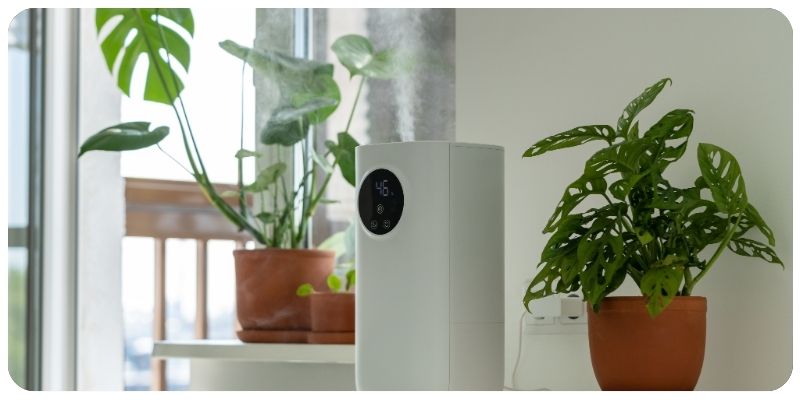
Best Indoor Plants for Air Quality
Indoor plants do more than just add beauty to your home; they also improve air quality by removing toxins and increasing oxygen levels. If you’re looking to create a healthier indoor environment, certain plants are particularly effective at filtering pollutants and promoting cleaner air. In this guide, we’ll explore the best indoor plants for improving air quality and how to care for them.
1. Why Indoor Plants Improve Air Quality
Plants absorb carbon dioxide and release oxygen through photosynthesis, but they can also remove harmful toxins from the air, such as formaldehyde, benzene, and xylene, which are commonly found in household products. Through a process known as phytoremediation, plants absorb these toxins through their leaves and roots, effectively cleaning the air around them. In addition to this, plants increase humidity, which can help reduce respiratory issues caused by dry air.
2. Top 5 Air-Purifying Indoor Plants
The following plants are some of the best for improving indoor air quality. They are not only effective air purifiers but are also easy to care for, making them perfect for any home.
1. Peace Lily (Spathiphyllum)
The Peace Lily is a popular indoor plant known for its ability to filter out toxins such as benzene, formaldehyde, and carbon monoxide. It thrives in low-light conditions and requires minimal care, making it a great choice for any room. Be cautious if you have pets, as Peace Lilies can be toxic to animals if ingested.
2. Snake Plant (Sansevieria trifasciata)
The Snake Plant, also known as the Mother-in-Law’s Tongue, is one of the most effective air-purifying plants. It is particularly good at removing formaldehyde and benzene from the air. This plant is also incredibly low-maintenance and can tolerate low light and infrequent watering, making it ideal for beginners.
3. Spider Plant (Chlorophytum comosum)
Spider Plants are excellent at removing carbon monoxide and formaldehyde from indoor air. They are non-toxic, making them a safe choice for homes with pets and children. Spider Plants are also easy to propagate, so you can create new plants from their “babies” (offshoots).
4. Boston Fern (Nephrolepis exaltata)
Known for its lush, feathery fronds, the Boston Fern is not only a beautiful addition to your home but also a powerful air purifier. It’s particularly effective at removing formaldehyde and xylene from the air. Boston Ferns prefer humid environments and indirect light, making them great for bathrooms or kitchens.
5. Rubber Plant (Ficus elastica)
The Rubber Plant is another excellent air-purifying plant that removes toxins such as formaldehyde from the air. It thrives in bright, indirect light and needs regular watering, but is otherwise easy to care for. Its broad, shiny leaves add a touch of greenery to any indoor space.
3. Caring for Air-Purifying Indoor Plants
While these plants are generally low-maintenance, providing the right care will ensure they thrive and continue to improve your air quality. Here are some general tips for keeping your air-purifying plants healthy:
Watering
Most air-purifying plants prefer to be kept evenly moist, but not soggy. Overwatering can lead to root rot, while underwatering can cause leaves to dry out and wilt. Be sure to check the specific watering needs of each plant, and always allow the top inch of soil to dry out before watering again.
Light
Many air-purifying plants thrive in low to medium light conditions, making them perfect for indoor spaces. However, some plants, like the Rubber Plant, prefer bright, indirect light. Place your plants in areas where they can get the right amount of light, but avoid direct sunlight, which can scorch their leaves.
Humidity
Some of the best air-purifying plants, such as the Boston Fern, prefer high humidity levels. To maintain proper humidity, consider misting the plants regularly or placing a humidifier nearby, especially in drier indoor environments.
Repotting
Air-purifying plants will continue to grow and eventually outgrow their pots. Repot your plants every 1-2 years, or when you notice roots growing out of the drainage holes. Use fresh potting soil and a slightly larger pot to encourage healthy growth.
Conclusion
Improving indoor air quality is as simple as adding a few plants to your home. Not only do these air-purifying plants remove harmful toxins, but they also add beauty and freshness to your space. By choosing the right plants and providing the proper care, you can enjoy a healthier, more vibrant indoor environment.